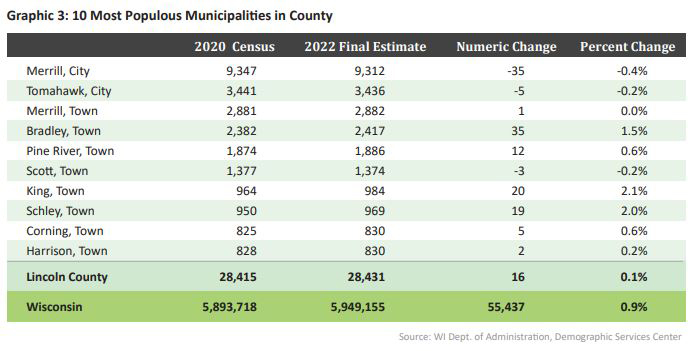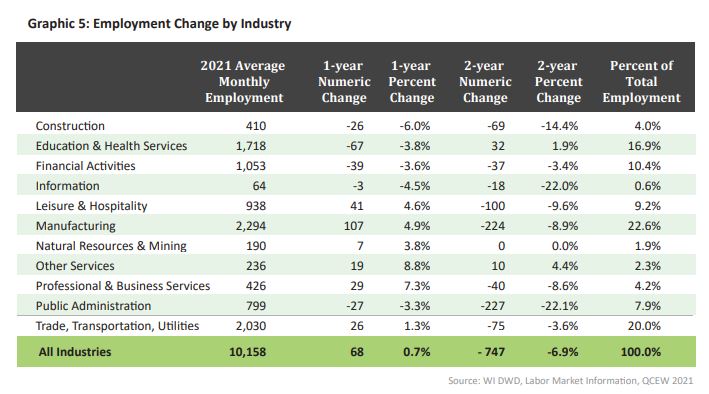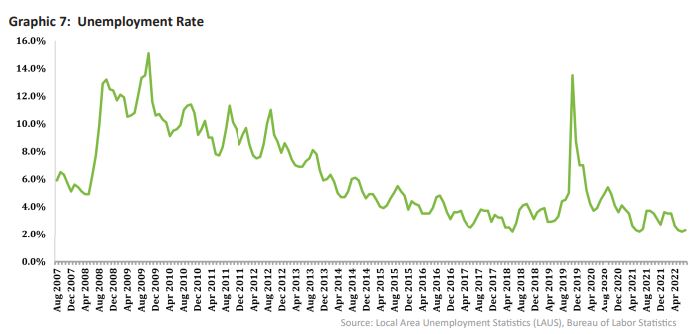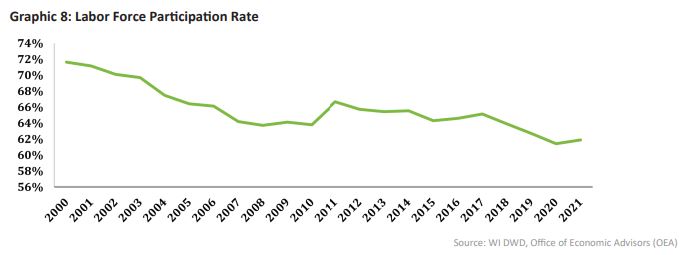For the Tomahawk Leader
WISCONSIN – The Wisconsin Department of Workforce Development (DWD), on Friday, June 30, published updated workforce profiles for Wisconsin’s 72 counties.
A release from DWD said each profile provides county-level information, analysis and data to help employers, job seekers, economic developers and other workforce partners make decisions related to the labor market economy.
Every two years, DWD’s Office of Economic Advisors compiles and distills local data on all 72 counties into individual county workforce profiles.
DWD said the 2023 profiles “cover Wisconsin’s historic bounce-back from the COVID-19 pandemic” and feature:
- Updated U.S. Census data and changing demographics, including figures for major municipalities
- Employment by 11 industry sectors, with payroll totals and percentages
- Occupational patterns within industries
- Unemployment and labor force participation rates
- Barriers to employment
- Average wages
“Wisconsin’s labor market economy has been on a record-breaking roll, and yet employers are feeling anxious about their ability to fill jobs due to a labor quantity challenge that’s been driven by demographic trends decades in the making,” said DWD Secretary-designee Amy Pechacek. “What sets Wisconsin apart from other states facing this challenge are our innovative approaches, including Governor Evers’ $158 million Workforce Solutions Initiative, to invest in our homegrown talent and connect career seekers with good-paying opportunities. To this end, the county workforce profiles provide an important resource for employers, community leaders, education providers, and other workforce partners in making decisions to stay competitive with local and regional talent attraction, retention and training efforts.”
Pechacek said the county workforce profiles “profiles reflect the expertise that our regional economists can offer employers, community leaders, education providers, and many other workforce partners to meet current and future workforce needs.”
“We stand ready to support and advance local and regional efforts to grow the economy and support the workforce today and in years to come,” Pechacek stated.
Lincoln County data
According to DWD, Lincoln County is the 28th least-populous county in Wisconsin with 28,431 residents. It’s also the 16th slowest-growing county in Wisconsin.
“From 2020 to 2022, the county gained 16 residents, proportionally increasing its population at a rate of 0.1%,” DWD stated. “This population change was unlike the declining trend exhibited over the course of the 2010s, where the county’s population declined by 328 residents, decreasing at a rate of 1.1%.”
DWD said the 10 most populous municipalities in Lincoln County accounted for 87.7% of the county’s overall population, and the City of Merrill was the largest contributor with a 32.8% share. From 2020 to 2022, these municipalities together added 51 residents.

From 2020 to 2021, employment Lincoln County increased by 68 jobs (0.7%) across all industries.
“This fell short of the state’s job growth of 2.5%, marking the county’s initial employment recovery from COVID-19 as comparatively sluggish,” DWD stated. “As of 2021, the county was down 6.9% to its 2019 employment level, while the state was down 3.1%.”

According to DWD, in comparison to the Great Recession, job loss and recovery was more prominent post-COVID-19.
“The unemployment rate takes the number of residents that did not have a job yet were actively seeking work and presents them as a share of the total labor force,” DWD stated. “In April 2020, Lincoln County’s unemployment rate climbed 8.5 percentage points, resulting in a peak rate of 13.5%, nearly matching the highest rates experienced in the aftermath of the 2008 financial crisis. Eight months after this initial spike, the unemployment rate fell to 4.5%.”
DWD noted that while the initial recovery was quick, it has decelerated considerably.
“The unemployment rate improved to 3.5% in Aug. 2022, the latest month for which county-level data are available,” DWD said.

Employers found attracting and retaining employees challenging even before COVID-19, according to DWD.
“Trends in labor force participation indicate that this challenge is likely to persist into the future,” DWD stated. “The labor force participation rate (LFPR) looks at the relative labor resources available and is expressed as the percentage of the civilian noninstitutional population 16 years and older that is working or actively looking for work. This rate faces downward pressure any time there is an aging population.”
DWD said Lincoln County’s LFPR has been trending steadily downward since 2000, when the oldest baby boomers were in the late stages of their prime working years. The local LFPR was 71.6% in 2000 and has diminished to 61.9% in 2021.

DWD identified transportation, housing, childcare and broadband internet access as “barriers to employment, which prevent people from entering or fully participating in the labor market.”
“As Wisconsin’s population continues to age and baby boomers exit the workforce, the long-term challenge of workforce quantity worsens,” DWD stated. “This increases the importance of labor market engagement.”
Full county profiles available online
To learn more, visit the DWD WisConomy page (www.tinyurl.com/ycyhmc9j), select a county from the dropdown list and click on “Go.”
Find a regional labor market economist from the online directory at www.tinyurl.com/2487mhfr.
